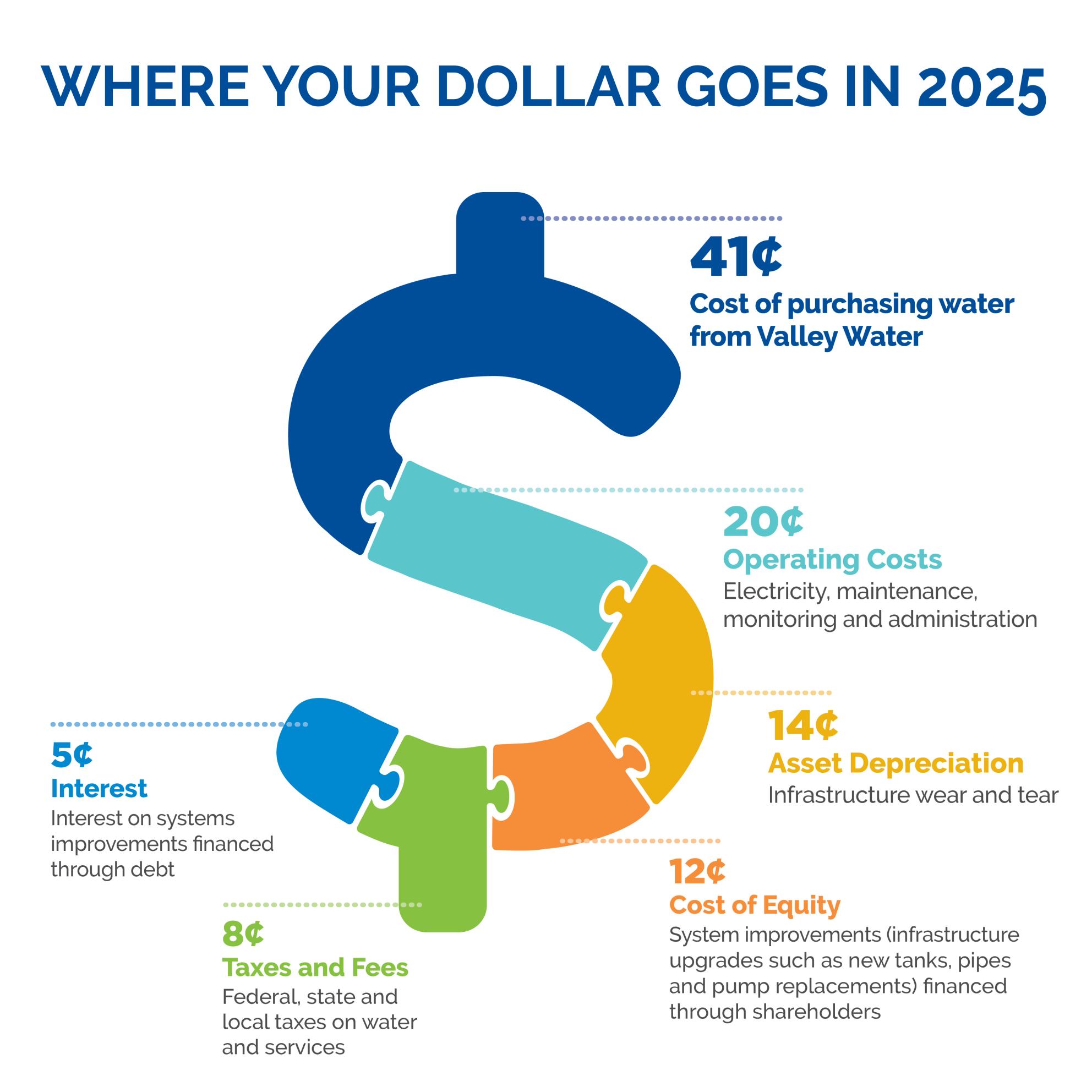
Rates & Regulations
San Jose Water's rates are set by an independent third party, the California Public Utilities Commission (CPUC). The CPUC's mission is to protect utility customers and ensure the rates charged by all utilities are fair and reasonable. The water rates charged by San Jose Water are based on "cost of service," which means we pass through our operating costs without a markup.
Browse this page for general information on your rates and the regulations that impact them.
Service Charge
How Your Service Charge is Calculated
Rates 101
Watch this video to learn about where your water comes from, what factors determine your water bill, and the energy, infrastructure, and people power that make it possible to access clean, reliable water 365 days a year.
Affiliate Formation Letters to the CPUC
The following letters are submitted in recognition of California Public Utilities Commission (“Commission”) Decision 11-10-034, Rule VIII.D, which requires any Class A Water Company, upon the creation of a new affiliate, to notify the Commission of its creation, as well as posting notice of this event on its website.
General Rate Case 2025-27
All water companies regulated by the CPUC are required to file a General Rate Case (GRC) every three years to ensure that rates accurately reflect the cost of providing service.
Rates Info, Cases & FAQs
Learn more about what goes into your water rates, and why water rates have increased.
Billing Schedules
The "schedule" refers to the type of service a customer uses. This page shows rates for different schedules.
How To Read Your Bill
This provides an overview of the information located on your billing statement.

2025 Valley Water Rate Increase
On July 1, Valley Water rate increases took effect for all water retailers in Santa Clara County.
